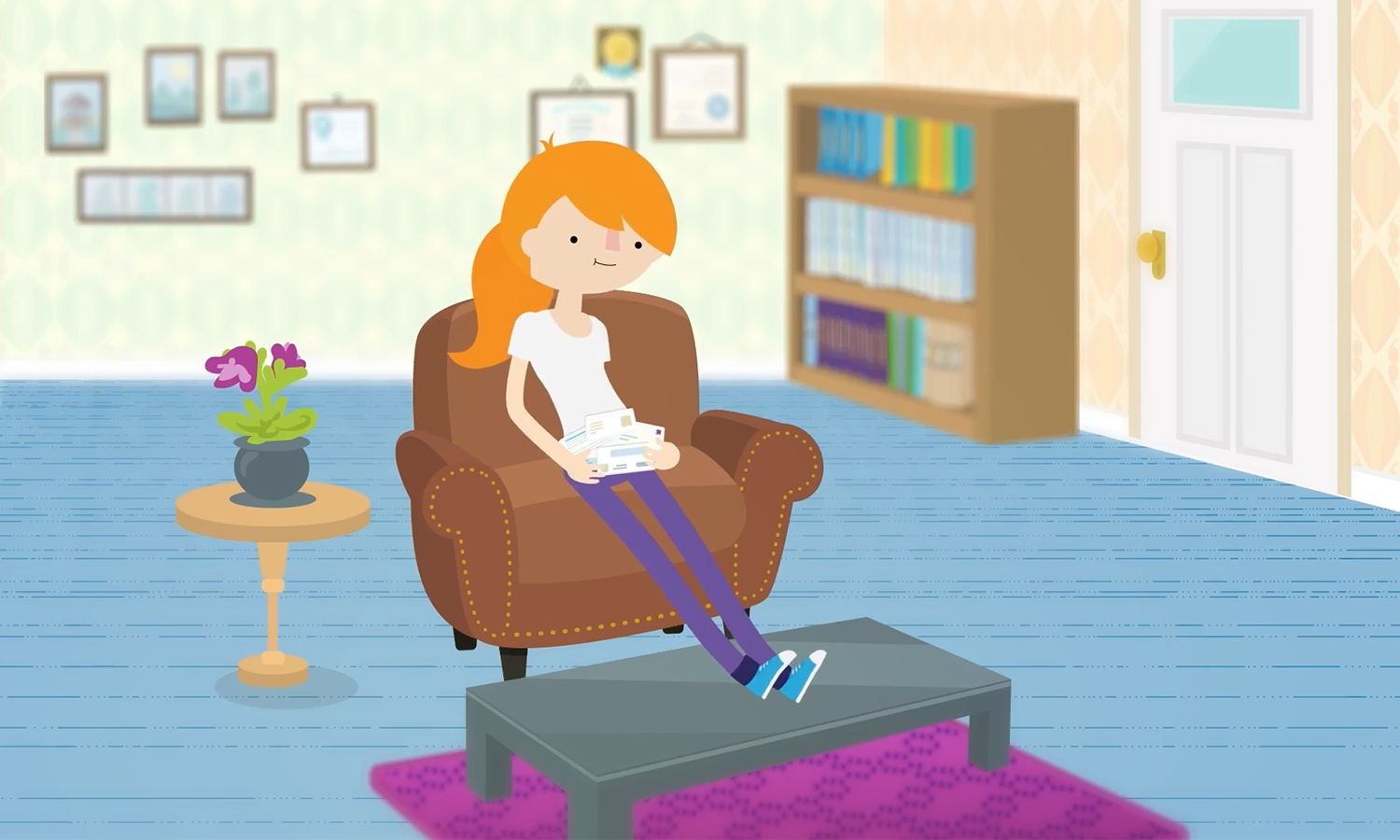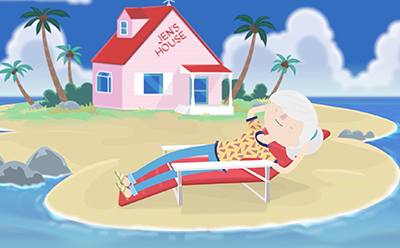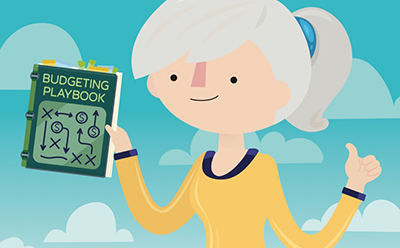Living on Your Own and ‘Bill Time’
Living on your own for the first time can be empowering. It means having independence and all the things that come with it. Some of those things — like not having to share a bathroom — are wonderful. Others — like killing spiders yourself — are not so fun. And leading the pack in the not-so-fun category: bills.
Bills tend to sneak up on us because they don’t fit nicely into a routine. They all have different due dates, some are delivered to your mailbox and others to your inbox, some need to be paid monthly and others yearly, and some have amounts that fluctuate. It takes a lot of wrangling to get them all under control.

The importance of ‘bill time’
Bills may not stick to a routine, but you sure can. No matter how you keep track of your bills, you still need to take the time to manage them. It can be as simple as 15 minutes, once a week. “Bill time” lets you:
- Gather up any bills received that week (especially the ones that like hiding under your junk mail)
- Locate and/or print out any e-bills received that week
- Input the bill totals and their due dates into your calendar (or notebook, or spreadsheet, or budgeting app)
- See what bills need to be paid that day
- Pay those bills (this could be a combination of paying them online and/or writing out checks and addressing envelopes)
- Mark those bills as paid (and revel in your self-satisfaction)
- Look ahead to see what your payment schedule looks like the following week and month
Sticking to the same day and time for “bill time” is important:
- It creates a routine that’s easy to follow
- It saves time by allowing you to tackle several payments at once
- It keeps you organized and aware of your payment schedule
- It’s the best way to eliminate the “out of sight, out of mind” problem that so many of us have with our bills
So, you have your regularly scheduled “bill time” and you have a stack of bills. Now you need a system to keep track of it all. Luckily, there are so many ways to manage your bills that it’s easy to customize a system that works well for you.
DIGITAL
Dedicated personal finance apps
If your smartphone is basically an extension of your body, using an app might be the best way to manage your bills. Although there are several stand-alone bill payment apps to choose from, you might also consider looking into more comprehensive budgeting apps that include bill management as a feature. If the apps are free, download a bunch of them and take a quick tour to see which one you like best. If you have to pay for an app, do some research to understand the extent of its features before you buy it.
These questions may help you in your search:
- Is it a calendar-based, spreadsheet-based or list-based app?
- Can you pay bills from within the app?
- Does the app use a notification system to remind you of upcoming bills? Can you customize those notifications?
- Is the app secure? (This is especially important if you need to input your personal or banking information.)
- Is the app supported by your financial institution?
- Is the app compatible with other apps you use (e.g., your digital calendar)?
Digital calendars
Personal finance apps can be helpful, but when it comes down to it, a generic calendar app is enough to help you stay on track. If you’re already a calendar app user, consider creating a sub-calendar with your bill payment schedule. Or, if you don’t like the idea of mixing “bill time” with leisure time, you can use a completely separate calendar app to manage your finances.
Digital spreadsheets
Spreadsheets are typically more of a laptop or desktop solution than a smartphone solution (although some software packages let you access your spreadsheets from anywhere). Most top budgeting programs include custom-designed spreadsheets, but there are also tons of free spreadsheet templates available for download that work with your default spreadsheet software — even Pinterest is full of them!
No matter how you keep track of your bills, you still need to take the time to manage them. It can be as simple as 15 minutes, once a week.
Reminders/alerts
A reliable reminder app can give your bill management system a powerful boost. If your bill payment app is lacking when it comes to notification options, a dedicated reminder app can make up for it. If you prefer organizing your finances on paper, you can still set up digital alerts to make sure you stay on track. And don’t forget to set up a recurring reminder for your weekly “bill time!”
ANALOG
On paper
Using pen and paper to manage your bills might sound completely old school — especially when there are so many digital alternatives available — but some people have much more success creating a payment schedule the analog way. There’s just something about writing things down and physically ticking items off a list that can make the process feel more “real” and tangible than doing the digital equivalent on your phone or laptop. So if you find yourself slipping on your payments no matter how many apps you download, give paper a try.
Paper calendars
If you’re a visual person, a calendar system is a great way to go. Wall calendars and agenda-style calendars work equally well (the dollar store and free printable templates are the cheapest way to get started). Mark down your paydays and your bills in your calendar, and come up with a consistent way to note when bills have been paid (like highlighting them).
Paper spreadsheets
Some people feel more organized if they have their spreadsheets printed out and sorted in a binder or notebook. A quick search on Google or Pinterest will connect you with tons of free, beautifully designed and printable spreadsheets that you can use to build your bill payment system.
Pro tip
No matter what system you end up using, this tip can help you avoid getting hit with a late fee. If you’re using a calendar-based system, write down your bills and their due date on the day on which you plan to pay them (not on their actual due date). It helps you stay ahead of the game and buys you a little extra time if you do happen to slip up.




